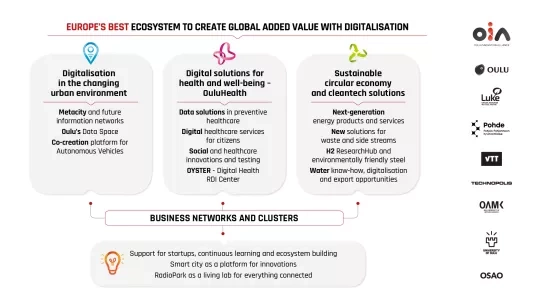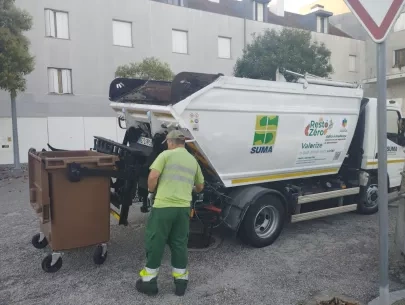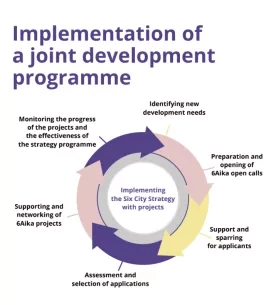A circular economy project for the citizens, with the citizens: BRICK-BEACH engagement process - ZOOM IN 2
With this second zoom, the floor is given to citizens and, especially, to those most directly concerned with the BRICK-BEACH results. Likewise, the opinion of the students and professors of the first and second cycle students are inquired, being aware that it is essential to involve the youngest in the success and sustainability of the project.
In any circular economy project, the role and participation of stakeholders is a basic element. No project of this nature can be understood without the active and committed participation of stakeholders at all levels. The BRICK-BEACH, as a circular economy project, is not an exception. The reason for this is quite evident. All circular economy projects have a common goal: to improve the citizens’ life through the implementation of activities related with recycling and sustainability of resources for present and future generations. At the same time, circular economy projects have a positive impact not only in the society and in our planet, but also represent a business opportunity, especially in the long term.
The BRICK-BEACH main responsible is perfectly aware of the above and, in that sense, from the very beginning of the project, they have encouraged the participation of all stakeholders in the design of activities, dissemination of objectives, expected results, etc., and all this, aimed at sectors that, in one way or another, have an interest in the success of the project. Thus, the final answer to the question of why are stakeholders important for BRICK-BEACH is because the project is a project for the citizens with the citizens, which are the main beneficiary.
BRICK-BEACH is engaging the stakeholders from the very beginning of the project implementation through the development of events such as the Project Launch Day with the presence of local authorities, neighbourhood associations, business representatives, including fishermen's associations, educational institutions, etc. In addition, multiple events are being organized in order to disseminate the objectives of the project with sectors such as education, in which all primary and secondary schools have been visited, neighbourhood residents 'associations, including residents' associations from other countries, and business associations. These meetings seek to publicize the project but also collect residents' concerns, propose proposals for improvement or change, or include in the management model of the Mezquitilla beach and its surroundings the uses proposed by neighbours and stakeholders.
This model of stakeholders’ participation will continue throughout the duration of the project, not only through face-to-face meetings but also through the project's social networks and official communications. One of the basic elements in which greater attention is being paid is in the process of selecting the business models and activities that are to be implemented in the adjacent area of the beach. So far, different innovative proposals have been received to be supported in the area that is being studied in order to analyse their viability and sustainability, in line with the criteria established by the BRICK-BEACH project.
The BRICK-BEACH project will be a success not only in carrying out all its infrastructure and works, but also to the extent that citizens, businessmen and, in general, all people who now and in the future make use of and enjoy a beach regenerated with construction waste with innovative services in the surrounding area. BRICK-BEACH is a complex project undergoing bureaucratic difficulties that require a significant effort from the partners, but also social support that, without a doubt, can help to solve these difficulties. In this sense, the expected outcomes are to get a strong ownership of the project by the stakeholders, now and in the future, and to reach a successful economic result of the activities to be implemented in the adjacent part of the beach. As already mentioned, BRICK-BEACH is a project by and for citizens. Achieving its final objectives requires the stakeholders to make the project their own, to assume it as a success for all and, to a certain extent, to drive it with sustainability criteria over time.
Stakeholders’ participation in BRICK-BEACH is not limited to testimonial support. On the contrary. Achieving the objectives and final results of the project requires direct participation in the business projects that will be carried out in the beach. The video shows an example of one of the potential projects to be implemented in the area. Likewise, the opinion of the business representatives of the area who support the project is presented and, ultimately, the expectations of the citizens as a whole before a project that represents the recovery of history and the memory of experiences and emotions that they believed lost.
Finally, it is worth mentioning the importance of the project attaches to the role of students in the stakeholder group. The video shows various presentations of the BRICK-BEACH goals in the area's primary and secondary schools with the main objective of strengthening the awareness of BRICK-BEACH as a project that can change reality and increase the well being of citizens.
About this resource
The Urban Innovative Actions (UIA) is a European Union initiative that provided funding to urban areas across Europe to test new and unproven solutions to urban challenges. The initiative had a total ERDF budget of €372 million for 2014-2020.
Similar content




